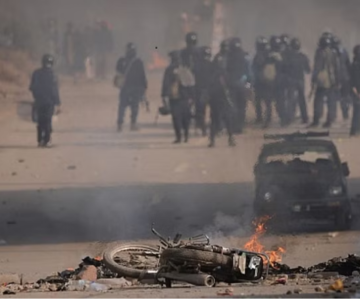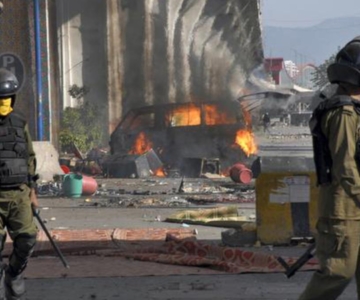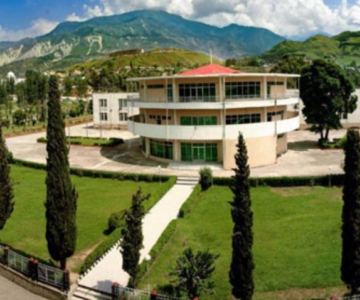My piece published by Himal Southasian
Islamabad is a very peculiar urban space. Though no longer a town, it is still struggling to become a city. Arguably, it is the most inhabitable place in Pakistan, and ranks far ahead of several other capitals in Asia and Southasia, nearly all of which are plagued by pollution, traffic jams, crime cartels and civil strife. Islamabad, despite the disturbances and security threats that became endemic during 2007, remains largely aloof from this pattern at least for now.
Located in the foothills of the Margallas, and boasting green spaces and forests intertwined among the folds of the city, Islamabad appears almost surreal against the densely populated rest of Pakistan. Built during the early 1960s by Pakistan’s developmentalist dictator, General Ayub Khan, Islamabad was seen as an antidote to politicised Karachi which, in any case, was a bit too far from the Punjab and the NWFP, the popular bases for Pakistan’s powerful military. Laid out as a model city with the help of Greek architects, this city of the exclusive was formally born in 1965. Nearby Rawalpindi was already the seat of the army’s headquarters, and its proximity to the new capital was certainly intentional.
The new city’s layout was divided into sectors, numbered streets and broad avenues that are called ramna, using the Bengali term. The civil bureaucracy of federal united Pakistan moved here, and thus the sleepy town suddenly emerged as a new urban settlement in line with the earlier planned emergence of Chandigarh. In Islamabad, roads would empty out after sunset, and the national capital would be oddly deserted on all public holidays. After all, for decades none of the residents actually belonged to this city.
The capital’s creation was not without controversy, though. The populist leader of then-East Pakistan, Sheikh Mujibur Rahman, dubbed it a visible sign of East Pakistan’s exploitation by the West Pakistani elites. A famous line had it that Islamabad reeked of the toils of East Pakistan, which produced jute and provided foreign exchange to the Pakistani coffers. Such voices were made redundant within a few years, though, as the army action in Pakistan’s eastern wing led to the War of Liberation, which in turn resulted in the creation of Bangladesh in 1971.
Islamabad finally belonged to the smug elites of West Pakistan, now truly the constructed, authoritarian Pakistan. During the 1970s and 1980s the city remained a graded zone, where people were measured by the scale and cadre of civil service to which they belonged. The original residents of Islamabad were mostly public servants, from the lowly minions to the mighty bureaucrats. A bureaucratic casteism thus defined its social and cultural life. This is the reason that a vital public space such as the National Art Gallery came into being only in 2007, after decades of delay and a purported lack of funds. A National Library was already in existence, though it was hardly accessible to the public, as the building was and remains enclosed within the security barricades of the prime minister’s secretariat.
Yet change has indeed come to Islamabad over the last decade or so. The city has opened up and, in the process, its population has crossed the one-million mark. In particular, its mix of residents has undergone a notable transformation, as the bulk of non-resident Pakistanis, the corporate sector and an overgrown development industry armed with consultants, advisors and think tanks makes up the robust environment of today’s Islamabad. Invisible though they may be, there are also shanty towns and squatter settlements reserved for the working class that serves the well-to-do sections of the society.
15 miles away
The city we know now is ostensibly where the Aryans from Central Asia may have originally founded a settlement, given that it lies directly on the route from West Asia down into India. Ancient caravans from Central Asia might have halted here. The shrinking Soan River, running through Islamabad, has even revealed Stone Age remnants, with the discovery of fossils and skulls alluding to a 5000-year-old past. There is also a little village named Saidpur, which bespeaks of a communal harmony of the pre-1947 age in which Muslims, Hindus and Sikhs lived together in peace (according to the Punjab Gazetteer of 1893-94), and a woman saint’s shrine is still a revered site of devotion. It is a separate matter that new housing colonies and greed for real-estate development has overshadowed the capital’s pristine natural environs.
The 21st-century Islamabad boasts wide avenues and expressways built under the regime of Pervez Musharraf, partly to ease traffic congestion but also to ensure the security of the very important personas of Pakistan’s ruling class. Once again, other parts of the country feel neglected. Deja vu? But the paradigm of development that cuts down trees, and neglects public transport by focusing instead on car owners, has of late invited fierce criticism from citizen groups.
Nonetheless, there remains much for the citizens of Islamabad and Rawalpindi to savour. The Margalla Hills offer relatively high-altitude recreation spots; the sculpted gardens of the Shakarparian National Monument and the Heritage Museum are new additions; and the tent-shaped Faisal Mosque, with its imposing architecture, has become the new postcard landmark for the entire country. While the tent defines the penchant of General Zia ul-Haq’s Pakistan to relate to the West Asian ethos, it also parallels, quite unwittingly, the Aryans and Mongols, who may have erected their own tents during halts near the future capital.
The official architecture is a mixed bag. The Supreme Court building, designed by a Japanese architect, is unique in its concept, and now stands metaphorically smack in the middle of Pakistan’s political fault lines. In August, the vibrant movement led by Pakistan’s lawyers to protect the independence of the judiciary catalysed the exit of Pakistan’s iron-man, Musharraf. The prime minister’s secretariat is an opulent replica of Mughal sensibilities, with unnecessary domes and overkill of marble to match. A few high rises, such as the Saudi Pak towers, are interesting fusion designs. On balance, though, these visual symbols remain reflective of the Pakistani elite’s love for crass display and yearning for grandeur. Little wonder that commercialism fuelled by globalisation screams out of the compound of a McDonalds erected in a public park and more so in the remakes of Broadway musicals sold as high culture.
Regardless, an entire generation now calls itself “Islamabadite”, and has taken thorough ownership of the city. Some vibrant groups have grown for environmental protection and civic interest; and, thanks largely to the expatriate population, there are now great bookshops. Islamabad has indeed expanded. Its new residents are quickly eroding the earlier casteism, and instead fuelling the general trend of a fast-urbanising, politically broiling middle class. If the world has heard too much about the Lal Masjid saga, when a violent confrontation took place between Islamic radicals and government troops on 3 July 2007, it is not the fault of Islamabad per se. Likewise the devastating attack on the Marriot hotel on 20 September. The city continues to flourish despite the suicide attacks and security spillover of the malicious war on terror.
In the heart of Islamabad today, a bodhi tree smiles. Dancing rituals take place at the Barri Imam shrine. And, a few dozen kilometres away, the remnants of the ancient, largely Buddhist, Gandhara civilisation wistfully face the milling jihadists. The civic authorities also try to counter the building mafia, in order to enforce standards after the tragic collapse of an apartment tower during the October 2005 earthquake.
Islamabad, the city of Islam, has defied cynics. At times compared to Arlington, the US national cemetery, and accused of being 15 kilometres away from Pakistan, Islamabad today nonetheless hosts Afghan refugees and squatter settlements. And regardless of what anyone says, its borders have already merged with the rest of Pakistan. Its elite bias notwithstanding, it will continue to baffle us – such is the dynamic of a pampered city.



